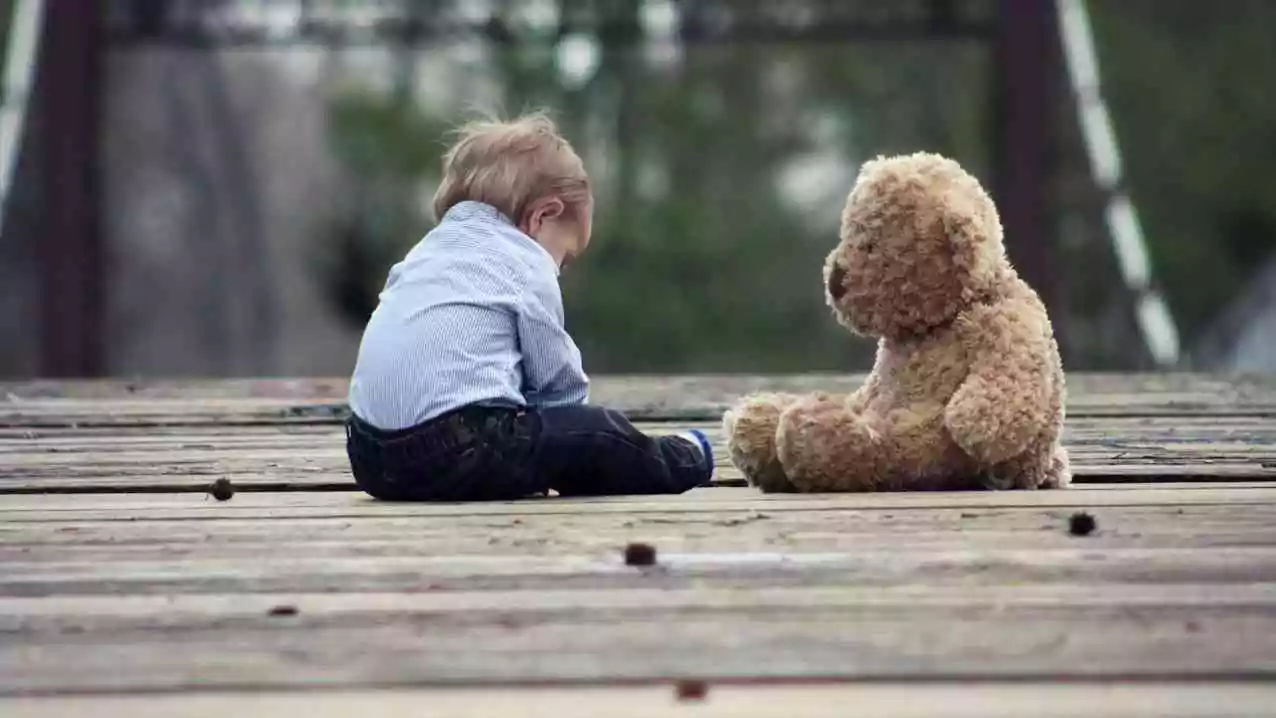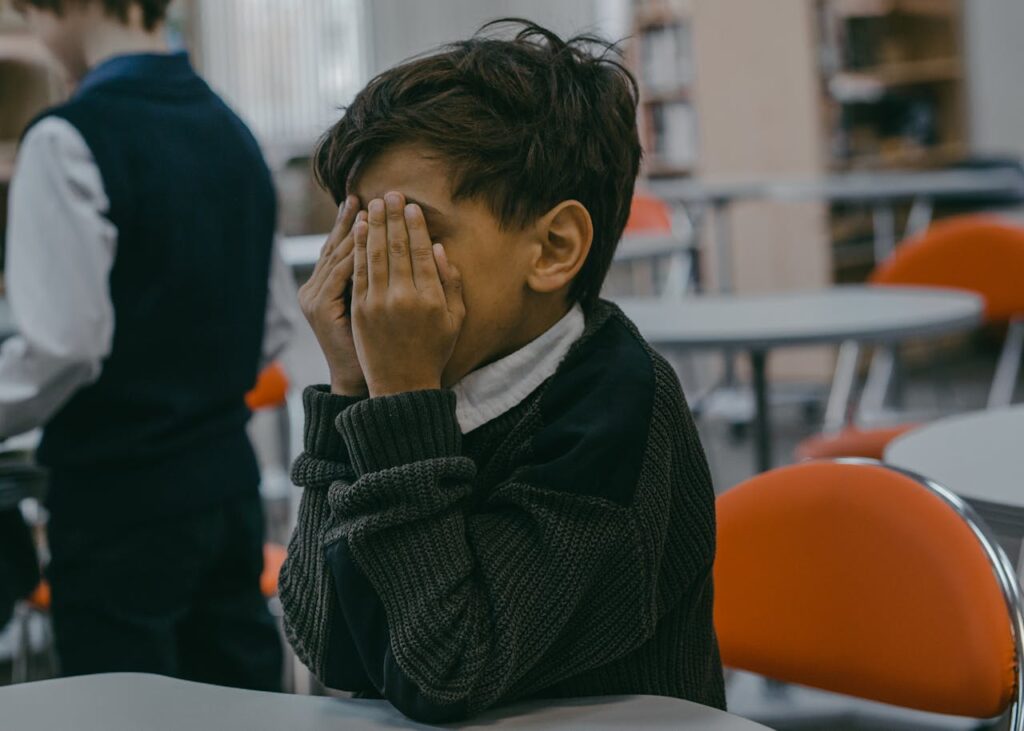Science
We Buy More Than We Plan. How the Psychological Trap Works
31 December 2025

Numerous problems and stimuli hinder the proper development of children. Parents often believe that their children are oblivious to what happens behind the closed doors of their bedroom, yet children are usually aware and grapple with the consequences. Schools strive for an ideal image, often turning a blind eye to uncomfortable truths... says Małgorzata Makarczuk-Kłos, a psychotherapist with the Non Licet Foundation, which provides assistance to victims of violence, in an interview with Monika Kaczyńska.
Małgorzata Makarczuk-Kłos: This is merely the tip of the iceberg. Children are exposed to violence from nearly every direction. A frequent, if not common, issue I encounter daily is the emotional violence that children experience. Another serious and under-recognized problem is sexual violence, which includes not only the most extreme form – rape – but also other forms of sexual abuse. Particularly troubling is the lack of a mechanism to automatically isolate the child from the perpetrator when such suspicions arise.
Contrary to appearances, it is not. The definition is clear – it refers to actions that hinder a child’s proper development. It is essential to understand that a child who witnesses violence is also a victim. Adults often think that children do not see or hear what happens behind closed doors in their parents’ room. Generally, however, children are well aware and must cope with the consequences.
Neglect is also a form of violence. It is not just about failing to meet physical needs, such as food or clothing, but also emotional needs.
Another form of violence is excessive pressure on children. Sometimes parents believe that if a child has a high-end computer and numerous extracurricular activities, everything is fine. Meanwhile, children feel overwhelmed, exhausted, and unheard. They cannot quit these activities because consistency is important, it’s seen as crucial for their future. Since parents are paying for these activities, they expect results. Thus, a child who appears well-cared-for is actually a victim of emotional violence.
It is also important to recognize that in today’s world, children have very little freedom. On the one hand, they are chauffeured everywhere; on the other, due to electronic grade books, they are under constant surveillance. Parents know every grade, and every comment immediately, and often react instantly. This deprives the child of the opportunity to develop skills, to learn to handle problems and to respond to difficult situations. It also leaves no room for the child to be heard and to present their perspective.
That is irrelevant. It must be stated clearly – when it comes to violence, whether physical or emotional, the perpetrator’s intentions do not matter. The measure of violence is the harm to the child, regardless of whether it was inflicted intentionally or not. The responsibility for the relationship between parent and child, or more broadly, between adult and child, always lies with the adult. If they lack the necessary skills, it is their duty to work on improving them.
We recommend: “It is just a slap”. About the psychological effects of violence
That is true. In Poland, there is no dedicated child protection service, unlike in many countries such as Germany or the Scandinavian nations. The efforts of various institutions – social services, psychologists, school counselors, police, and the courts – are fragmented and therefore ineffective.
That’s correct. One reason is the belief in the sanctity of the family, and another is the reluctance to interfere with its autonomy. However, I believe that establishing such an institution, where all concerning signals about a child could be addressed in one place, would allow for more effective action. As for parents’ concerns – those who do not use violence against their children have nothing to fear.
In Poland, the child’s perspective is still rarely considered. Although the so-called “Kamil’s Law” introduced the institution of hearing out the children by the court, which can decide their fate, the problem is that judges frequently do not know how to talk to children. Additionally, parents are given multiple chances. Sometimes the court sends them to parenting skills courses, but no one – the court, the probation officer, or social workers – clearly defines the expectations for the parents. They do not really know what behaviors need to change. A few days of court-ordered courses cannot make a significant difference. Then, another hearing takes place, and even though nothing has changed in the family, the court does not take concrete action. This can go on for years. Another issue is the effectiveness of probation supervision. It is worth asking whether the probation officer even talks to the child, and if they do, how honest the conversation can be if the parent, potentially the perpetrator, is just outside the door.
A lot needs to change here. Decisions should be made more quickly. The situation could also be improved by the specialization of judges and prosecutors.

That is true. Children often fall victim to their peers. Unfortunately, few schools take measures to both prevent violence and address it when it occurs.
Schools strive to maintain an ideal image. In defending their reputation, they turn a blind eye to inconvenient truths. When they can no longer ignore the facts, they resort to ineffective, sometimes even harmful methods. I encountered a situation where a student had difficult relationships with peers and felt alienated. Initially, he was subjected to mockery, and the situation escalated until his classmates stripped him and took photos. Despite parental interventions and evidence, the school did nothing for a year. The perpetrators were not punished, and no actions were taken against them. After a year and further interventions, the school proposed mediation.
Yes, it is. Article 48 of the Council of Europe Convention on preventing and combating violence against women and domestic violence explicitly prohibits the mandatory use of alternative dispute resolution measures between the perpetrator and the victim. This is not a situation where both sides have equal standing. For the victim, it inflicts additional harm.
There are countless such situations. We need to take concrete, long-term actions to address them. On the other hand, we also need to look at the perpetrator and ask why a child is resorting to violence against peers. Is the child themselves a victim of violence? Have they not learned other ways to solve problems? Children are not inherently bad; the roots of violence always lie in the family.
We need to teach children their rights, and where their boundaries are, and give them the right to defend those boundaries. Adults need to be sensitive and attentive. Simple actions like careful observation, conversation, and most importantly, effective responses to violence are crucial. It’s essential to understand that if a child reports a problem once and nothing is done, they will not come forward a second time. This is our – adults’ – responsibility.
I see this hope in education and sensitization. Today, after decades of education, the awareness that physical violence – such as hitting children – is wrong is widespread. We can hope that education will eventually lead us to respond just as decisively to other forms of violence.
Translation: Klaudia Tarasiewicz


Humanism
30 December 2025

Zmień tryb na ciemny